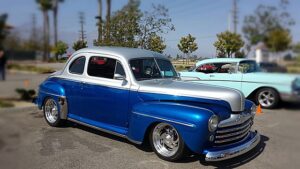Introduction
Brake pads and rotors are essential components of a vehicle’s braking system. They work together to provide the necessary friction and heat dissipation required to slow down or stop a vehicle. Understanding how brake pads and rotors function can help drivers maintain their vehicles’ braking performance and ensure their safety on the road.
Brake Pads
Function: Brake pads are responsible for creating the necessary friction to slow down or stop a vehicle. When the brake pedal is pressed, hydraulic pressure is applied to the brake caliper, which then squeezes the brake pads against the rotors. This friction generates heat, which helps convert the kinetic energy of the moving vehicle into thermal energy, ultimately slowing it down.
Materials used: Brake pads are typically made of various materials, including organic compounds, semi-metallic materials, and ceramic compounds. Each material has its own advantages and disadvantages. Organic brake pads are quieter but may wear out faster, while semi-metallic pads offer better heat dissipation but can be noisier. Ceramic brake pads provide excellent performance, low noise, and reduced dust, but they can be more expensive.
Signs of wear: Over time, brake pads wear down due to the friction they generate. Common signs of worn brake pads include squealing or grinding noises when braking, reduced braking performance, and a longer braking distance. It is crucial to regularly inspect and replace worn brake pads to maintain optimal braking performance and prevent damage to other braking system components.
Brake Rotors
Function: Brake rotors, also known as brake discs, are the flat, circular metal discs that the brake pads clamp onto. When the brake pads press against the rotors, the resulting friction slows down or stops the rotation of the wheels. The heat generated during this process is dissipated through the rotors’ design, preventing overheating and ensuring consistent braking performance.
Materials used: Brake rotors are commonly made of cast iron, which provides excellent heat dissipation capabilities. However, some high-performance vehicles may use carbon-ceramic composite rotors, which offer superior heat resistance and reduced weight but come at a higher cost. Cast iron rotors are suitable for most everyday driving situations and provide reliable braking performance.
Types of rotors: There are two main types of brake rotors: solid rotors and ventilated rotors. Solid rotors are a single piece of cast iron and are commonly used in less demanding driving conditions. Ventilated rotors, on the other hand, have internal vanes or fins that increase airflow and heat dissipation, making them more suitable for high-performance or heavy-duty applications.
Conclusion
Brake pads and rotors are crucial components of a vehicle’s braking system. Brake pads create the necessary friction to slow down or stop a vehicle, while brake rotors provide the surface for the brake pads to clamp onto and dissipate heat. Regular inspection and maintenance of these components are essential to ensure optimal braking performance and the safety of both the driver and passengers.
References
– Brake Pads: www.carbibles.com/brake-pads-explained/
– Brake Rotors: www.popularmechanics.com/cars/how-to/a3128/4217368/












